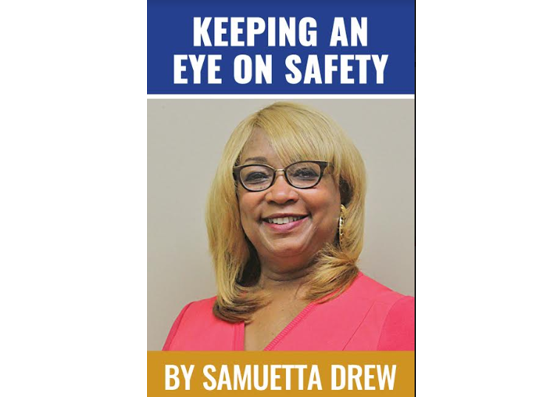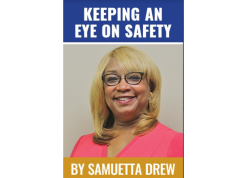By Samuetta Hill Drew
Drowning kills 4,000 people each year in the United States. It is the number one leading cause of deaths for children 1 to 4 years of age. Additionally, the Centers for Disease Control and Prevention (CDC) reports there are approximately 8,000 emergency department visits annually for nonfatal drowning each year.
Drowning is a serious public health problem which is preventable. There’s a misconception that people who are drowning yell, thrash and splash. This is not true. Drowning doesn’t look like drowning. It is quiet and can occur in seconds. It can happen to anyone or anytime where there is access to water. Remember swimming in the ocean is different than a pool.
Below are some drowning safeguards and practices to be aware of whether swimming in the ocean or pool:
- Keep in mind that water conditions can change quickly. Learn to identify rip currents and be sure to analyze the water before entering.
• Swimming pools are a particular hazard for very young children (1 to 4). Temptation may have you shift your attention momentarily to a magazine, emails, videos or indulge in a cute fruity cocktail while poolside, but it is critically important to always remain focused on young children. It only takes a moment of inattention to place a child at risk of drowning.
• Be able to identify your party when they are out in the water. It is recommended that your swimming attire be any color beside blue.
• Supervise closely. Designate a responsible adult to supervise and constantly watch children who are in or near water (including bathtubs). Adults watching the children should avoid distracting activities.
• After the swimming activity has ended, shut and lock doors that give access to the water.
• Be proactive and learn of any risks when visiting another person’s home or an unfamiliar location.
• Wear a life jacket to reduce the risk of drowning while boating. This applies for people of all ages and swimming abilities.
• Formal swimming lessons can reduce the risk of drowning, but all children, regardless of formal lessons, still need close and constant supervision when in or around water.
• Learn CPR. This could save someone’s life in the time it takes for paramedics to arrive. This is especially true if you have a pool at your home or at your beach/lake house.
• Always use the buddy system. Choose swimming sites that have lifeguards when possible. The buddy system is especially beneficial for people with seizure disorders or other medical conditions that increase their risk of drowning.
• If you are the person drowning, make yourself visible and loud. Wave your arms above water and call out for help. Float or tread water on your back if needed.
• If you see someone else drowning by being pulled under or away from shore, call out for a lifeguard or call 911.
Anytime you are in or around water it is essential to Keep an Eye on Safety for you, your family and other loved ones.



